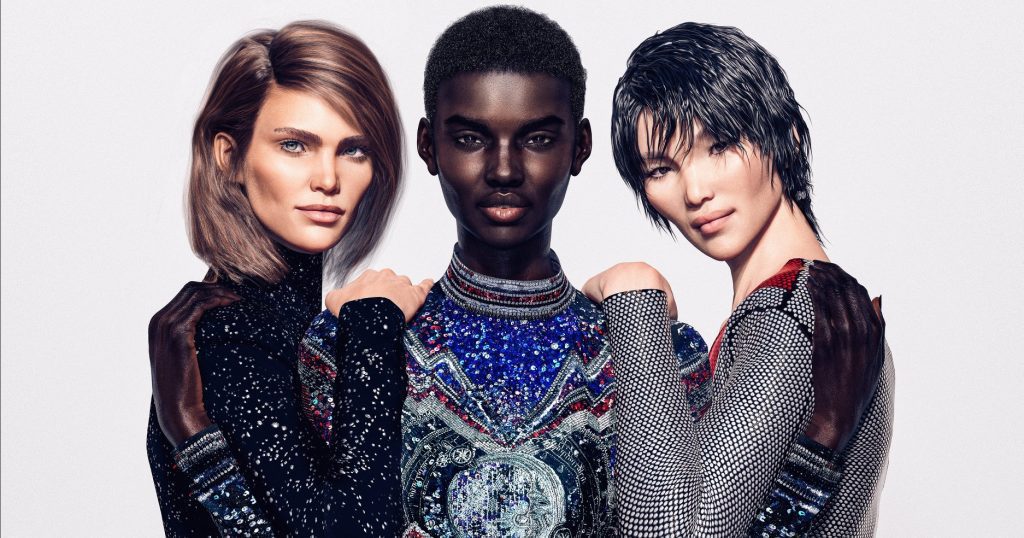Contents
Summary
Founded in 1945, Pierre Balmain’s eponymous fashion brand has evolved into a singular union of Parisian couture heritage and 21st-century creativity. Always remaining true to its core values of inclusion, empowerment and excellence, often surprising and bold, Balmain’s design aesthetic is an instantly recognizable silhouette, assertive spirit and the powerfully transformative possibilities that only beautiful design and skilled construction can achieve. Part of Mayhoola, led by the vision of Creative Director Olivier Rousteing, the house’s rapid growth and success is due to the passionate and talented Balmain family of craftspeople, experts and team members who make each collection possible.
History
Pierre Balmain’s father owned a drapery business and his mother and sister owned a fashion boutique where he often worked after his father passed away in 1921. In 1925 Pierre Balmain won a scholarship to a boarding school in Chambéry following which he completed his formal education at École des Beaux-Arts. Even though he studied architecture Balmain knew he was drawn to Fashion and after learning the ropes of designing dresses from his mother and sister.. he worked for atelier Robert Piquet as a freelance artist and then for Molyneux.
In the late Thirties Balmain served in the French air force and the army pioneer corps. After peace was declared he opened his own fashion house at 44, rue François 1er in Paris where he released his first collection in October 1945 and his first fragrance Jolie Madame in 1949. Few know that Balmain met met Christian Dior through common friends and they became very close. It was Christian Dior who supported his dreams of opening his own establishment even though the two gradually fell out of touch.
Per BoF: ‘At the beginning of his career as an independent designer Pierre Balmain had the honour of having two highly respected intellectuals- Gertrude Stein and Alice B Toklas- attend his first post-war show. Stein wrote a piece about it called ‘From Dark to Day’ for Vogue. “I suppose at the opening, we were the only ones who had been clothed in all those long years in Pierre Balmain’s clothes. We were proud of it… So pleased and proud. Yes, we were…”‘
There was no looking back since. Balmain was an established name in Fashion and he outfitted luminaries including Ava Gardner and Brigitte Bardot.. the Nicaraguan first lady Hope Portocarrero and Queen Sirikit of Thailand. In 1949 Balmain opened a boutique in New York and two years later he set up a company in New York City. There were several feathers in his cap — his 1949 Jolie Madame fragrance.. his appointment as a chevalier de la Legion d’Honneur in 1962.. and the the launch of Revlon’s first perfume Miss Balmain in 1966.
Following his death in 1982 the maison was led by Balmain’s right-hand man Erik Mortensen who won two Golden Thimble awards for his haute couture collections. The maison also recruited Peggy Huynh Kinh as Artistic Director in 1982 of the women’s ready-to-wear and women’s and home accessories lines. Mortensen left the house in 1990 and was succeeded by fashion designer Hervé Pierre as Director of ready-to-wear and haute couture. In 1992 Pierre was succeeded by legendary fashion designer Oscar de la Renta who favoured classic silhouettes and intricate detailing like Maison’s founder… resisting seasonal trends for individuality and opulence. De la Renta led the House between 1993 and 2002 and was then replaced by Christophe Decarnin who favoured a bold modern design aesthetic.
Changes in the corporate structure continued and In April 2011 Decarnin was to be replaced by Olivier Rousteing who worked to re-orient the Balmain look towards the finer aspects of French couture. Rousteing has brought a fresh take on the brand’s core aesthetic that remains till date. He was credited with adding an Asian influence to the clothing as Asians are a significant percentage of the fashion brand’s buyers.
In April 2016 Balmain opened its New York flagship store in Soho. That year Balmain announced that Qatari group Mayhoola for Investments had acquired the company for an estimated $560 million. The legendary fashion brand continued making waves. In 2017 Olivier Rousteing debuted Balmain’s accessory line and the following year he introduced Balmain’s new logo. And, he continues to adhere to the maison’s core values and heritage while adding a modern spin to it.
Vogue acclaimed Balmain RTW 2023: “Under those hats unfolded a collection that featured many direct references to the founder. The look 22 maze monogram.. the bows.. the pearl-defined polka dots.. and the deconstructed tailoring with lapels twisted wonderfully to define generously proper necklines—all were examples of this. But this was no period drama: Rousteing updated Balmain’s original dialect with 21st century technology and contemporary craft…”
What’s more Balmain continues to remain relevant with the evolving consumer under Olivier Rousting. Per BoF: “It is the even wider reach of Rousteing’s ‘Balmain Army — Kanye West- Kim Kardashian-West Rihanna, Rosie Huntington-Whitely and a score of other instantly recognisable Insta-famous figures — that has enabled Balmain to raise its global brand awareness, reaching a new young audience.. quite different to the house’s ‘Jolie Madame’ roots.”
Vision
Synonymous with strong maximalist glamour Balmain envisions empowering women since the label’s inception in 1946. Fans and consumers of the French fashion brand are popularly referred to as the “Balmain Army”: dressed in modern power pieces with strong shoulders.. striking silhouettes.. and metallic embellishments. The house’s “Balmain Army” is a one-of-a-kind grouping that is very much a reflection of the unique vision of Olivier Rousteing. Open to all, the Balmain Army is filled with members who are forward-thinking, diverse and excited about pushing the frontiers of society and fashion. While they value true craftsmanship, heritage and style, they are excited by new possibilities that Balmain’s rule-breaking makes possible.
Mission Statement
To always dress women in the right look for the right moment.
Products and Services
Haute couture, ready-to-wear, perfume and jewellery
Key Team
Jean-Jacques Guevel (CEO)
Olivier Rousteing (Head Designer)
Rachid Mohamed Rachid (Chairman)
Awards and Recognition
Eric Mortensen won two Golden Thimble awards for his haute couture collections for Balmain, one for the Autumn/Winter 83/84 and one for the Autumn/Winter 87/88.
References
- Official website Balmain
- How Olivier Rousteing made Balmain a revolutionary force in fashion Vogue
- Vogue profiles Balamin Vogue
- Balmain Fall RTW 2023 Vogue
- Pierre Balmain BoF
- Inside Balmain’s Digital Revolution BoF
- Facebook page of Balmain Facebook
- Olivier Rousteing Named New Designer at Balmain The New York Times
- Twitter page of Balmain Twitter
- Mayhoola Investments acquires Balmain Vogue
- Valentino’s Qatari Owners Acquire Balmain BoF
- LinkedIn page of Balmain LinkedIn
- Kylie Jenner Named Artistic Director of Makeup for Balmain Show Hollywood Reporter
- Instagram page of Balmain Instagram
- Balmain to leverage Olivier Rousteing’s pull in ambitious expansion drive Fashion Network
- Victoria’s Secret x Balmain Harpers Bazaar
- Star Designer leaves Balmain New York Times
- Wiki page of Balmain Wikipedia
- Balmain’s Creative Director breaks new ground Financial Times
- Brand History Farfetch
- Eric Mortensen wins Golden Thimble awards for Balmain Wikipedia





